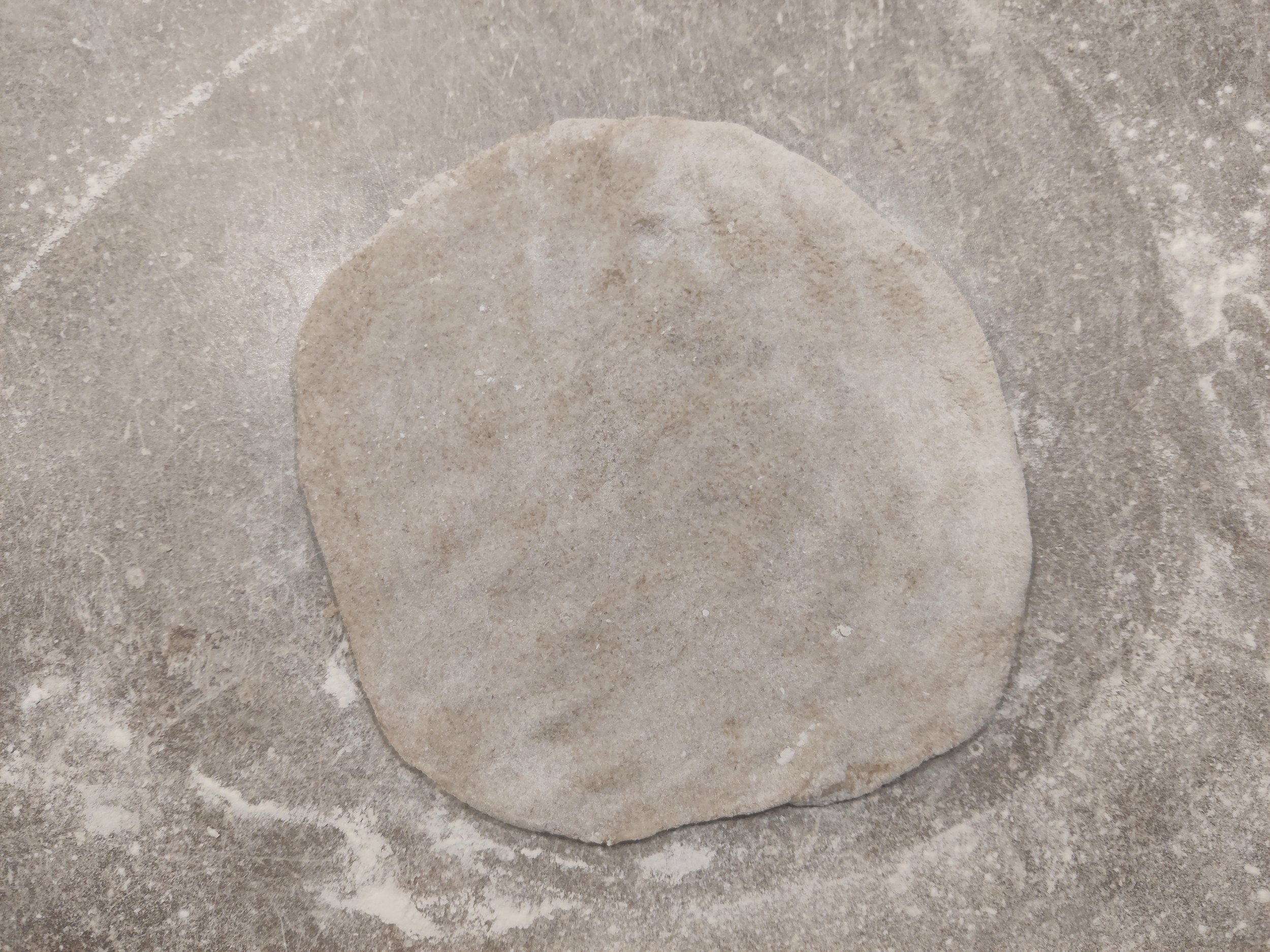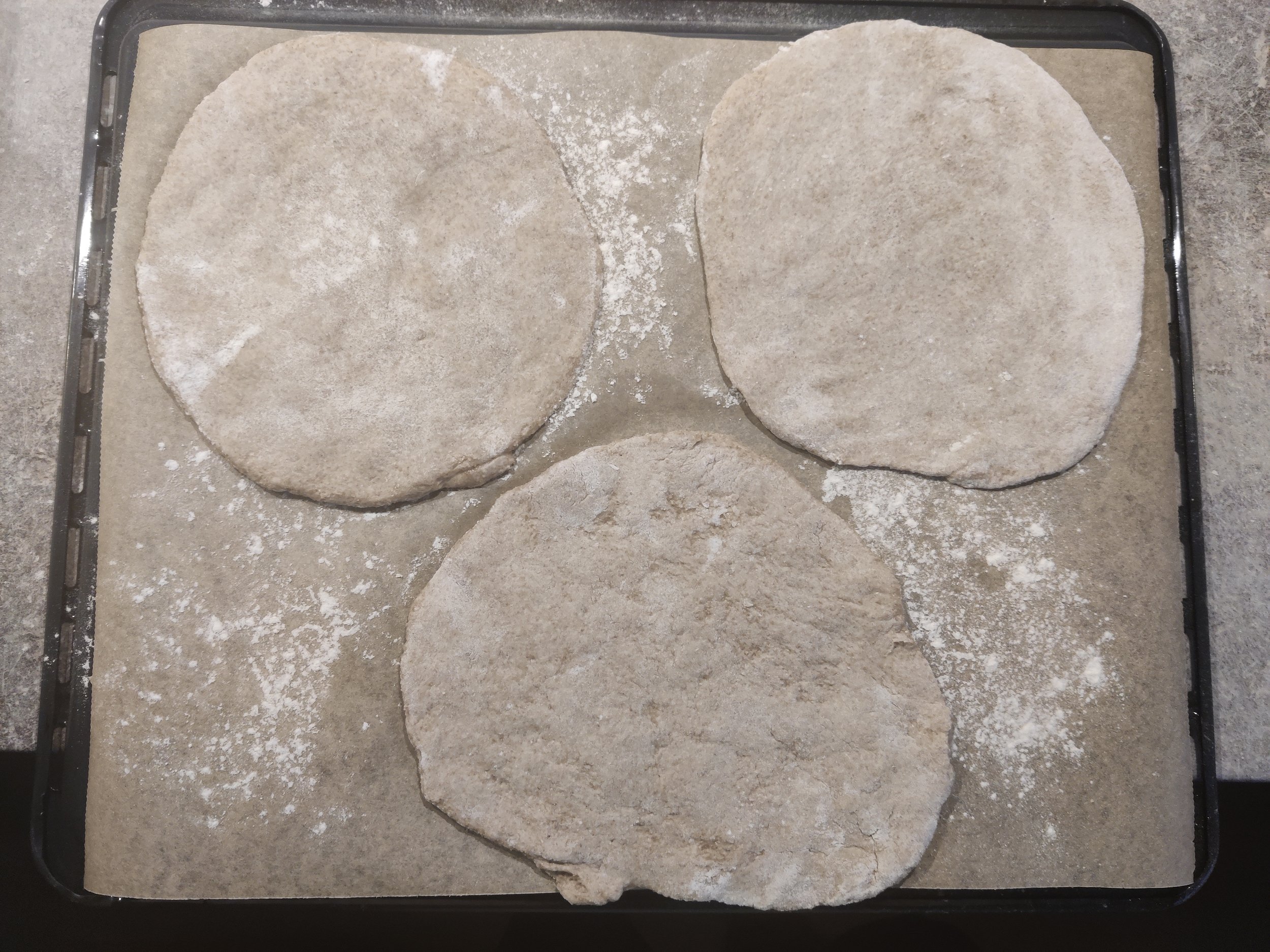The Breads of Egypt: Eish Senn - عيش سِن
Eish senn is probably Egypt’s least glamorous bread. Most Egyptians who know about this bread know it in a very specific context: dieting. It exists across supermarkets in its dried, crunchy form as a healthier alternative to the more common balady. The idea is that a dark, bran-rich bread will be more filling than white bread and therefore discourage over-consumption and make you feel full for longer. The unfortunate fact of the matter is that the hard and crunchy texture coupled with the overpowering bran flavour puts most people off of eating this stuff. And so, the box of crunchy brownness is gradually moved, usually by our mothers, away from the limelight and into kitchen obscurity where it joins commercial spice blends and single-function kitchen tools.
An example of commercial dry Senn bread, claiming to help with weight loss (source: Faragalla Facebook page)
But it doesn’t have to be like this. Eish senn is actually made by the same traditional bakeries that make eish balady and it’s just as soft. It’s simply a bran-rich pocket bread, made in a similar way to all the other pocket breads and it doesn’t have to be hard and crunchy. The main difference is that the bran goes in the dough and there’s a lot more of it. So if the selling point is the health benefit then the soft texture is a much more appealing option than the hard and crunchy. I would argue that the bran gives it a richer, nuttier flavour and that it’s a type of bread that deserves its place because of that.
The challenge with adding wheat bran into a dough is that it makes gluten formation more difficult, which could make the formation of a fully opened pocket more difficult. I found in my testing that soaking the bran in twice its weight in boiling water (150 grams bran + 300 grams boiling water) gave very good results. The boiling water softens the bran and allows it to fully hydrate. This makes it less likely that the sharp edges of the bran interfere with gluten formation later on during kneading. After the bran is fully cooled down, the rest of the dough ingredients are added and the dough is mixed and kneaded. This extra step, though time-consuming, increases our chances of producing a lighter, fully opened loaf.
Fully opened eish senn
As for what to do with it, the answer should be obvious by now since this is the third pocket bread on this website. Fill it up with your favourite breakfast items such as mashed fava beans, ta’meya (Egyptian falafel), pickled aubergines and feta cheese maybe. Or take a lighter approach like me and have it with some olives, tomatoes, soft white cheese and some aged romy cheese. Whatever you do, just don’t let it get dry, put it away and forget about it.
Ingredients:
350 grams all-purpose flour
150 grams wheat bran
200 grams room-temperature water
300 grams boiling water
1.5 teaspoon (10 grams) salt
1 teaspoon yeast
Estimated time:
Mixing and kneading: 1 hour
Rising time: 1 hour, 30 minutes
Baking: 10 minutes
Steps:
1- In a large bowl, add the wheat bran and the boiling water. Mix well until the wheat bran is well hydrated then leave to cool down to room temperature (at least one hour).
Soaked wheat bran
2- Add the room temperature water to the soaked wheat bran and mix it in until the bran is loosened. Then add the the salt, the yeast and the flour. Mix everything until a smooth dough is formed. Knead for about five minutes until some elasticity is developed. This will not be as strong as balady bread due to the high bran content.
Dough mixed
3- Cover the dough and allow it to rise at room temperature for around 60 to 90 minutes, or until almost doubled in size.
4- Dust your kitchen counter with some flour and turn the risen dough onto it. Divide the dough into six equal pieces, weighing about 160-170 grams.
Dough divided
5- Preheat your oven to 240 degrees C (or as high as it can go) and place a baking tray in the middle to get really hot. Meanwhile have another tray ready, upside down, lined with a sheet of parchment paper.
6- Lightly dust your work surface with flour and start stretching out the pieces into discs about 20 cm in diameter. I stretched them by hand but you can use a rolling pin if you’re more comfortable with that. Place three rolled pieces onto the parchment paper.
7- Carefully slide the parchment paper onto the hot tray in the oven and bake for three to five minutes, or until the bread puffs up and darkens a little bit on top. Repeat with the remaining three pieces.
Eish senn finished











